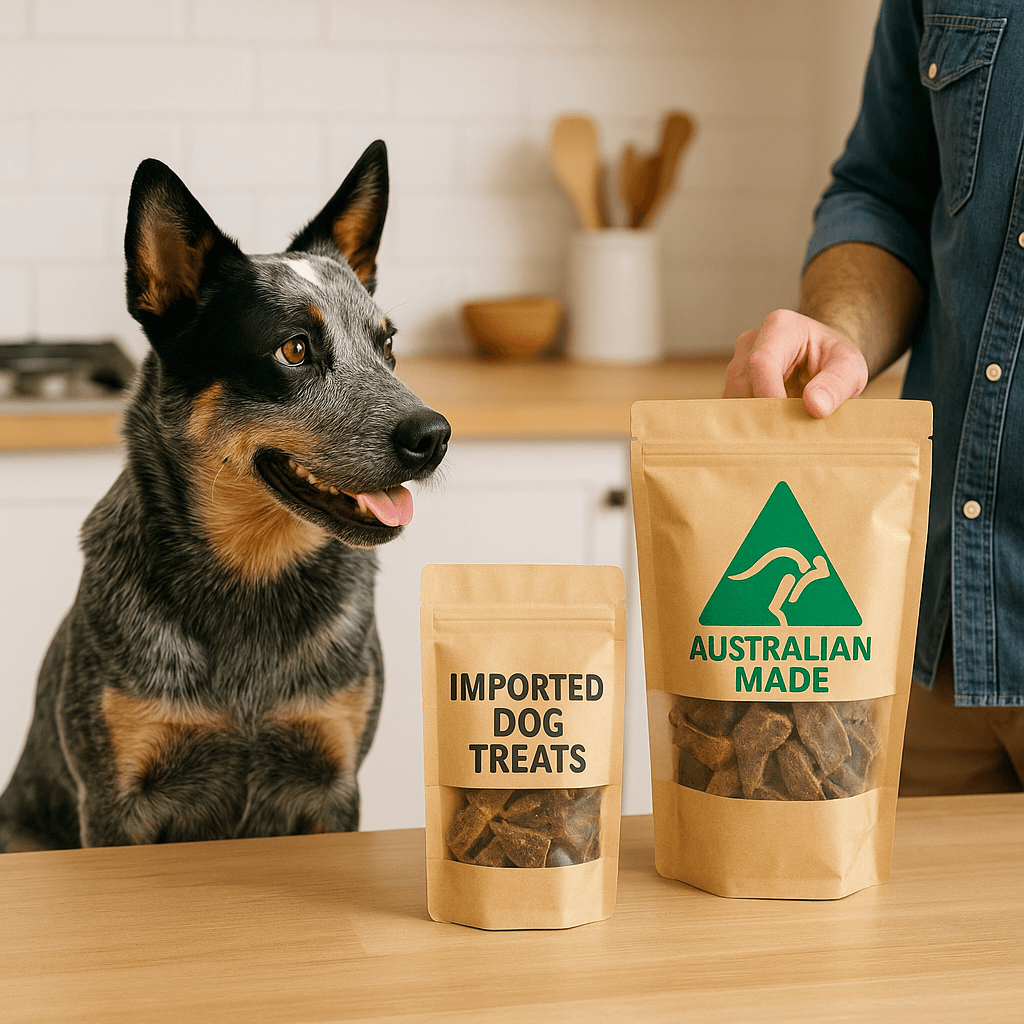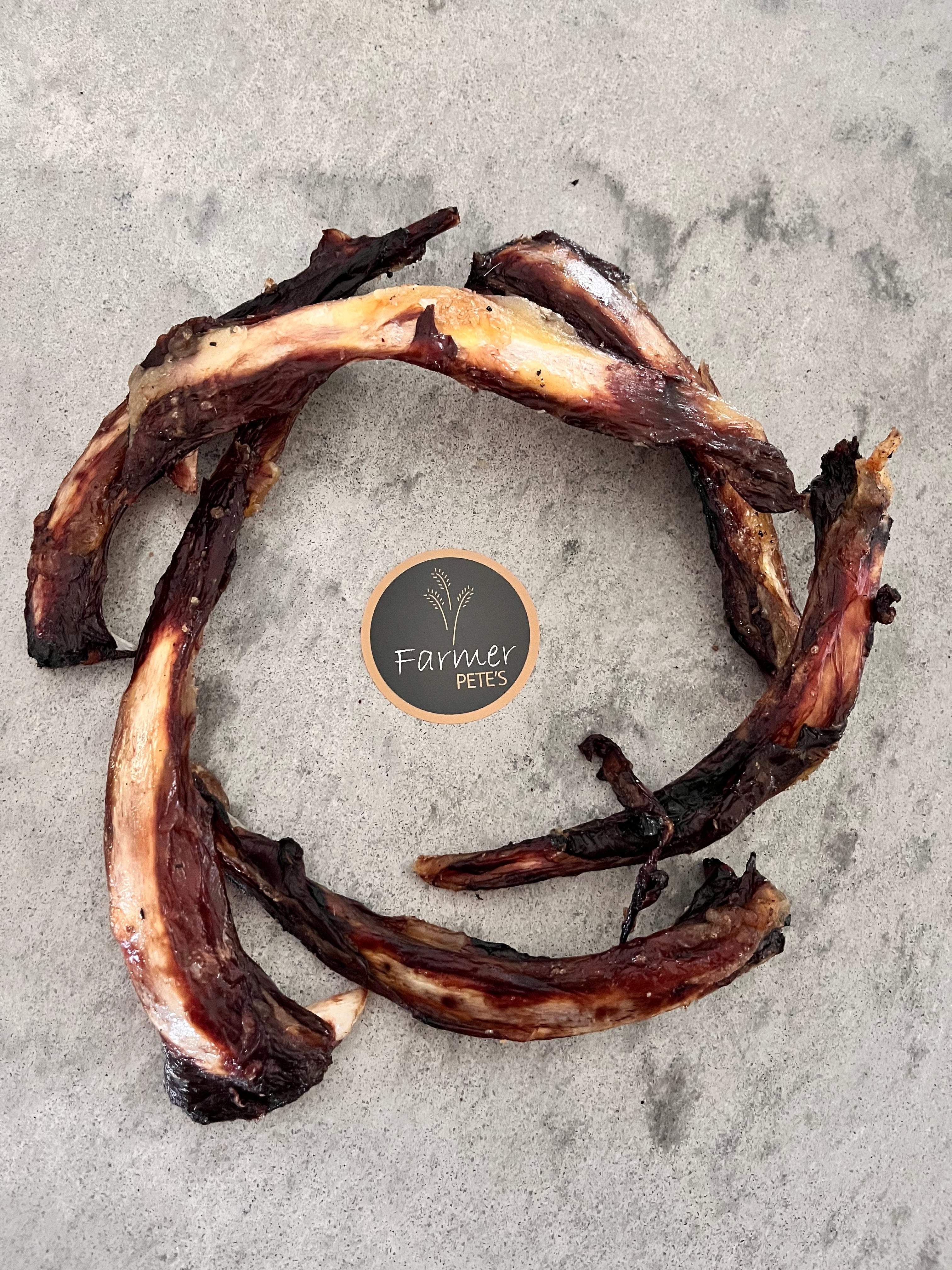Introducing dogs to children can be a wonderful experience for both the child and the dog, but it's important to take some precautions to ensure everyone's safety. Here at Farmer Pete’s, we have a lot of dogs and even more children/grandchildren, so they all must get along.
Ensuring Your Kids And Dogs Become Friends (Forever)
Here are some tips and strategies for a harmonious existence and an even more enjoyable experience.

Teach Children How to Approach Dogs
It's important to teach children how to approach dogs properly, including not running up to them and not grabbing them. Children should approach dogs calmly, speak softly, and in a gentle manner and ask the owner's permission before patting them. They should not run up to the dog or make loud noises, as this can startle or frighten the dog.
Supervise Interactions
It's important to supervise all interactions between the dog and the child, especially during the initial introduction phase. This can help prevent any potential incidents or accidents and can also help establish positive interactions between the two. Then, always supervise children when they are interacting with dogs. Even the most well-behaved dog (or child) can become unpredictable in certain situations, so it's important to watch both the dog and the child at all times.

Start Slowly
Start by having the child sit quietly near the dog while the dog is on a leash. Allow the child to offer the dog a treat, or toy, Farmer Pete’s of course, but make sure the child is not touching the dog yet. Gradually allow more interaction between the child and the dog as they become more comfortable with each other.
Teach Your Dog Basic Commands
Dogs should be trained to follow basic commands, such as "sit" and "stay." This will make it easier for you to control the dog in situations where the child and dog are interacting. Teaching children to use these commands makes for an enjoyable experience and gives the child confidence when around dogs.
Avoid Overstimulating the Dog
Some dogs may become overstimulated and aggressive if they are patted too much or if there is too much noise and activity around them. If you notice your dog becoming overly excited or anxious, remove them from the situation and give them a chance to calm down. The dogs own bed or crate is good for this and the children must learn it is a “no go” place.
Teach Children to Respect the Dog's Space
Children should be taught to respect the dog's space and not to disturb them while they are eating, sleeping, or in their “no go” place. Dogs should have a designated safe space where they can retreat when they need some alone time. This could be a crate or a designated area of the house where the dog knows they can relax without being disturbed. It's important to establish boundaries so that the dog feels safe and secure.
Play Games Together
Dogs and children can have lots of fun playing games together, such as fetch or hide-and-seek, tug- o-war. Just make sure the toys are safe and dog friendly and you remain supervision at all times and that the child is not putting themselves or the dog in danger.
Teach Children About Dog Body Language
Children should be taught to read a dog's body language so they can understand when a dog is feeling uncomfortable or scared. Signs that a dog is feeling anxious or scared include cowering, growling, and baring their teeth. Teach Children to Read the Dog's Body Language: Children should be taught to read the dog's body language, such as their tail position, ear position, and overall demeanour. This can help the child understand the dog's mood and can help prevent any potential incidents.
Keep the Environment Safe
Make sure the environment is safe for both the dog and the child. This means keeping dangerous items out of reach of the dog and making sure there are no hazards, such as sharp objects or loose electrical cords, that could harm the child.

Encourage Positive Reinforcement
Positive reinforcement is an effective way to train dogs and can also help reinforce positive interactions between the dog and the child. Encourage children to reward the dog with Farmer Pete’s treats, praise, or a game when they display good behaviour.
Avoid Punishment
Punishing the dog can lead to aggressive or fearful behaviour and can also negatively impact the relationship between the child and the dog. Instead, focus on positive reinforcement techniques and redirecting the dog's behaviour when necessary.
Involve Children in Dog Care
Involving children in the care of the dog can help them develop a sense of responsibility and empathy. Children can help feed the dog, take them for walks, and give them water. Just make sure the child is supervised and that they are not putting themselves or the dog in danger.

Teach Children About Dog Care
In addition to helping with the dog's basic care, children should also be taught about the importance of regular vet visits, grooming, and dental care. This can help them understand the responsibility that comes with owning a pet and can foster a sense of empathy towards animals.
Teach Children to Be Gentle
This is a big one. Children for whatever reason think it is a great game to pull a dog’s tail and ears. Children should be taught to be gentle when interacting with dogs. They should not pull the dog's tail or ears, and they should not hit or kick the dog. It's important to establish positive interactions between the child and the dog so that both feel comfortable around each other.
Provide Plenty of Exercise
Dogs need plenty of exercise to stay healthy and happy. Encourage children to play with the dog outside games like fetch or if the child is older take them for a walk. This can be a fun and healthy activity for both the child and the dog and will form an everlasting bond. Toys and games can be a fun way for children to interact with the dog.
Teach the Dog Tricks
Teaching the dog tricks can be a fun activity for children and can help the dog develop new skills. Tricks such as "shake," "roll over," and "play dead" can be taught using positive reinforcement techniques such as Farmer Pete’s Treats. Children receive a sense of accomplishment and love to show others their dog’s tricks and dogs love getting their Farmer Pete’s Treats. Win Win for both!
Attend Training Classes
Training classes can be a great way to teach both the dog and the child how to interact with each other. This can be especially helpful if the dog is a new addition to the family and needs to learn basic commands and manners.
Be Prepared for Pet Emergencies
When there is dog’s and children together there will usually be tears or a yelp, especially if the child is a 2–3-year-old. It's important to be prepared for emergencies, such as a dog bite or injury. Teach all children how to respond in case of an emergency and have a plan in place for getting medical help if needed.
Consider the Dog's Personality
When introducing a dog to children, it's important to consider the dog's personality and temperament. Some dogs may be more outgoing and social, while others may be more reserved or anxious around children. Make sure the dog is comfortable around children and that they have been properly socialised before introducing them to a child. If it is a puppy a lot of time with introductions is needed.

What about introducing your dog to your new human baby?
Bringing home a new baby with a dog in the house can be an exciting but potentially challenging time for both you and your dog. Here are some tips to help you prepare your dog for the new arrival and ensure a smooth transition for everyone:
Start early
If you're expecting a baby, start preparing your dog well in advance. Start by establishing new routines, such as walking your dog at the same time every day and gradually reducing the amount of attention your dog receives from you.
Introduce your dog to baby smells
Before your baby arrives, bring home some baby items, such as blankets, clothing, and nappies, so your dog can become familiar with the scent.
Train your dog
If your dog needs to learn new commands or behaviours, start training as soon as possible. Teach your dog basic obedience commands such as sit, stay, come, and leave it, and practice these commands with distractions present.
Set boundaries
Establish boundaries for your dog, such as keeping your dog out of the nursery or off the furniture where the baby will be. You may also want to invest in baby gates or playpens to keep your dog and baby separate when necessary.
Supervise interactions
Always supervise your dog when he's around the baby, and never leave them alone together. Teach your dog to approach the baby calmly and gently, and reward good behaviour with Farmer Pete’s treats and praise.
Make time for your dog
Even with a new baby in the house, it's important to continue to make time for your dog. Take your dog on walks and play with him when you can, and make sure he still feels loved and included in your family.
Finally
Bringing home a new baby can be a big adjustment for your dog, so be patient and understanding as you work together to adapt to your new family dynamic.

Conclusion
Theirs is nothing more pleasing than to see children and dogs together enjoying each other’s company. Introducing dogs to children can be a fun and rewarding experience for both parties.
By following these tips, strategies, and activities, you can help ensure that the relationship between the child and the dog is a positive experience that strengthens their bond that is built on mutual respect and trust.
It can also be a wonderful experience that can foster a lifelong love and appreciation for animals.



